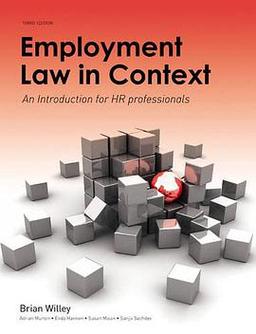
Discrimination and Employment Laws: A Comprehensive Overview
Discrimination in the workplace is a significant issue that affects millions of individuals globally. To address this problem, various countries have implemented employment laws that aim to protect workers from discrimination. In this article, we will delve into the concept of discrimination and employment laws, exploring their origins, types, and implications.
Understanding Discrimination
Discrimination refers to the unfair or unequal treatment of individuals based on certain characteristics, such as race, gender, age, religion, or disability. This behavior can manifest in various forms, including hiring, promotion, and termination decisions, as well as day-to-day interactions in the workplace.

Origins of Employment Laws
The roots of employment laws can be traced back to the early 20th century when labor movements gained momentum. These laws were initially designed to protect workers from exploitation and ensure fair wages. Over time, they evolved to address discrimination and promote equality in the workplace.
Types of Discrimination
Discrimination can be categorized into several types, each with its own set of laws and regulations:
| Discrimination Type | Description |
|---|---|
| Racial Discrimination | Unfair treatment based on race, including hiring, promotion, and termination decisions. |
| Gender Discrimination | Unfair treatment based on gender, including pay disparities, hiring practices, and sexual harassment. |
| Age Discrimination | Unfair treatment based on age, including hiring, promotion, and termination decisions. |
| Religious Discrimination | Unfair treatment based on religion, including hiring, promotion, and termination decisions. |
| Disability Discrimination | Unfair treatment based on disability, including hiring, promotion, and termination decisions. |
Employment Laws in the United States
In the United States, several laws have been enacted to combat discrimination in the workplace. Some of the most notable include:

- The Civil Rights Act of 1964: This landmark legislation prohibits discrimination based on race, color, religion, sex, or national origin.
- The Equal Pay Act of 1963: This law ensures that men and women are paid equally for performing substantially similar work.
- The Americans with Disabilities Act of 1990: This act protects individuals with disabilities from discrimination in employment, public accommodations, transportation, and telecommunications.
- The Age Discrimination in Employment Act of 1967: This law prohibits discrimination against individuals aged 40 or older.
Employment Laws in the European Union
The European Union has also implemented several laws to combat discrimination in the workplace. Some of the key regulations include:
- The Equal Treatment Directive: This directive prohibits discrimination based on age, disability, religion or belief, sex, race, or ethnic origin.
- The Framework Agreement on Gender Equality: This agreement aims to promote gender equality in the workplace.
- The European Union Directive on the Implementation of the Principle of Equal Treatment between Men and Women in matters of Employment and Occupation: This directive ensures equal treatment for men and women in employment and occupation.
Implications of Employment Laws
Employment laws have several implications for both employers and employees:
- For Employers: Employers must ensure that their hiring, promotion, and termination decisions are based on merit and not discriminatory factors. They must also provide reasonable accommodations for employees with disabilities and promote a diverse and inclusive workplace.
- For Employees: Employees have the right to work in a discrimination-free environment. They can file complaints with the appropriate authorities if they believe they have been discriminated against.
Conclusion
Discrimination and employment laws are essential tools for promoting equality and justice in the workplace. By understanding the origins, types, and implications of these laws, we can work towards creating a more inclusive and fair work environment for all.



